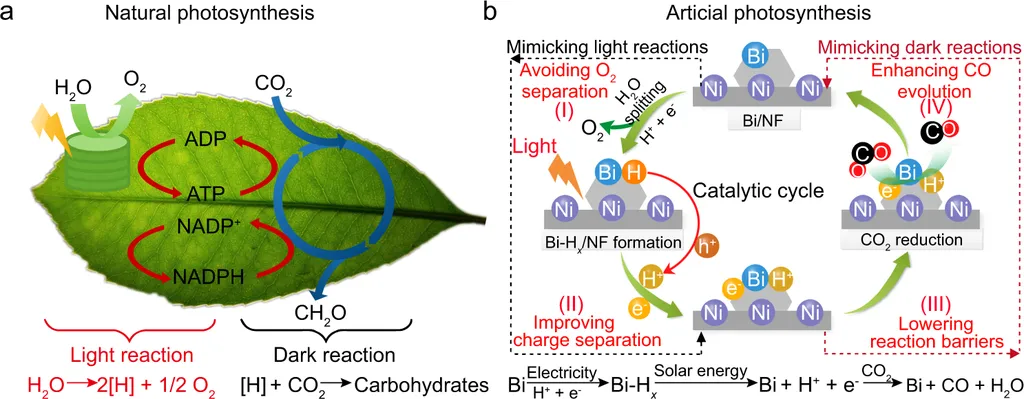In a significant stride towards advancing green energy technologies, researchers have developed a novel approach to enhance the stability and efficiency of photocatalysts used in CO2 reduction. The study, led by Yan Zhang from the School of Chemistry and Chemical Engineering at Huanggang Normal University in China, focuses on the construction of CdS/Mg-CdIn2S4 heterostructures, offering promising implications for the energy sector.
The research addresses a critical challenge in photocatalysis: the photocorrosion of cadmium sulfide (CdS), a material known for its excellent photochemical properties and high quantum efficiency in the visible light region. “While CdS shows great potential, its practical application has been hindered by its poor stability,” explains Zhang. To overcome this limitation, the team constructed heterojunctions by integrating CdS nanowires and nanoparticles with Mg-CdIn2S4 nanosheets.
The results, published in the journal Liaoning Shiyou Huagong Daxue xuebao (translated as Journal of Liaoning Petrochemical University), demonstrate a remarkable improvement in catalytic performance. The CdS nanowires/Mg-CdIn2S4 heterojunction exhibited superior photocatalytic performance, achieving CO and H2 production rates that are 46.2-fold and 56.8-fold higher than pristine Mg-CdIn2S4, respectively.
This breakthrough could have substantial commercial impacts for the energy sector, particularly in the realm of carbon capture and utilization. By converting CO2 into valuable chemicals like CO and H2, this technology offers a sustainable pathway to reduce greenhouse gas emissions while simultaneously producing useful energy carriers.
The successful construction of these heterojunctions not only enhances the material’s overall stability but also opens new avenues for further research and practical applications. As Zhang notes, “Our work provides a solid foundation for the development of more efficient and stable photocatalysts, paving the way for large-scale implementation in industrial settings.”
The study’s findings underscore the significant academic and practical potential of heterostructured photocatalysts in the field of CO2 reduction. As the world seeks innovative solutions to combat climate change, advancements in photocatalytic technologies like these offer a glimmer of hope for a more sustainable future. The research highlights the importance of interdisciplinary collaboration and the role of fundamental science in driving technological innovation.
In the broader context, this work could inspire further exploration into the design and optimization of heterostructured materials for various energy applications. By pushing the boundaries of what’s possible in photocatalysis, researchers are not only addressing current challenges but also laying the groundwork for next-generation energy solutions. As the energy sector continues to evolve, the insights gained from this study may prove instrumental in shaping the future of clean energy technologies.

